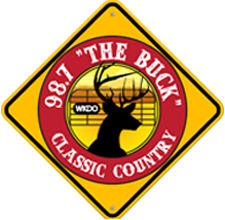FRANKFORT, Ky. (April 11, 2022) – Two words to remember when approaching a highway work zone: Slow down. You could save a life, and it might be your own.
Kentucky last year recorded 1,247 crashes in construction and maintenance/utility work zones. Seven people were killed and 299 injured. Six of the seven fatalities were motorists or their passengers. Those tragic numbers compared with 905 crashes, six fatalities and 228 injuries in 2020.
“The spring and summer months are active construction seasons so you’re likely to encounter a work zone on your commute,” said Gov. Andy Beshear. “Speeding and driving with distractions compromises safety for both workers and motorists. Whether you’re behind the wheel or in one of the work zones, we all have an interest in exercising safe practices on our roadways.”
Monday, April 11, kicks off National Work Zone Awareness Week, and the Kentucky Transportation Cabinet (KYTC) is joining other state transportation agencies to promote its importance in saving lives and preventing injuries.
A work zone is anywhere a crew member is working. Work zones can involve construction workers, maintenance workers, utility crews, mowing contractors, brush cutters and tree trimmers.
“Regardless of type, work zones are a sign to slow down and be alert,” Gov. Beshear said. “Let’s be good neighbors on the road and watch out for each other. We all have loved ones we want to see at the end of the day.”
The 1,247 work zone crashes recorded in Kentucky last year were the second-most in at least 15 years, and the number of fatalities was the highest since 2017, when 12 people died. Year after year, the great majority of victims are drivers or their passengers, and most work zone crashes in 2021 occurred in the daytime.
KYTC has an ongoing effort to increase safety in work zones through a combination of equipment innovations and training. They include temporary rumble strips, made of heavy rubber, which are portable and can be moved as a work zone advances.
They also include the use of a queue protection vehicle, also called a crash cushion, which is a large, truck-mounted shock absorber equipped with warning lights and message board. It is positioned on the shoulder of the highway, a half-mile before stopped traffic, and moves with the traffic queue.
The cabinet also plans to expand training to include a temporary traffic management planning course for project designers.
“It takes safe drivers plus safe workers to have save work zones,” KYTC Secretary Jim Gray said. “On any given day, the ‘office’ for a work zone crew may be the emergency shoulder, a grassy median or a blocked-off driving lane. These crews work in hazardous conditions every day.”
Here are tips for driving safely in a work zone:
- Pay attention. Don’t text or talk on the phone. Keep both hands on the wheel.
- Drive alert. Watch for speed limit reductions, narrowing lanes, changing traffic patterns and – most importantly – workers.
- Respect posted speed limits.
- Be patient. Driving 45 mph instead of 55 mph through a 5-mile work zone will only add 1.2 minutes to your trip. Speeding and aggressive driving are major causes of work zone crashes.
- Keep a safe distance. Allow space on all sides of your vehicle and maintain a safe following distance. The most common type of work zone crash is a rear-end collision.
- Respect flaggers and obey their guidance. A flagger has the same authority as a regulatory sign, so a driver can be cited for disobeying the flagger’s directions.
- Follow instructions on construction signage. Those signs are carefully selected to give drivers accurate information and important warnings.
- Know before you go. Check out go.ky.gov or use the free WAZE app for traffic and travel information. Select alternate routes when possible. If a work zone cannot be avoided, expect delays and allow for extra time.
- Get excited. Work zones mean crews are working to improve your commute or community.
To learn more about KYTC’s Vested in Work Zone Safety Campaign, visit | KYTC. Work zone testimonials and tips will be shared all week on KYTC’s social media accounts.








